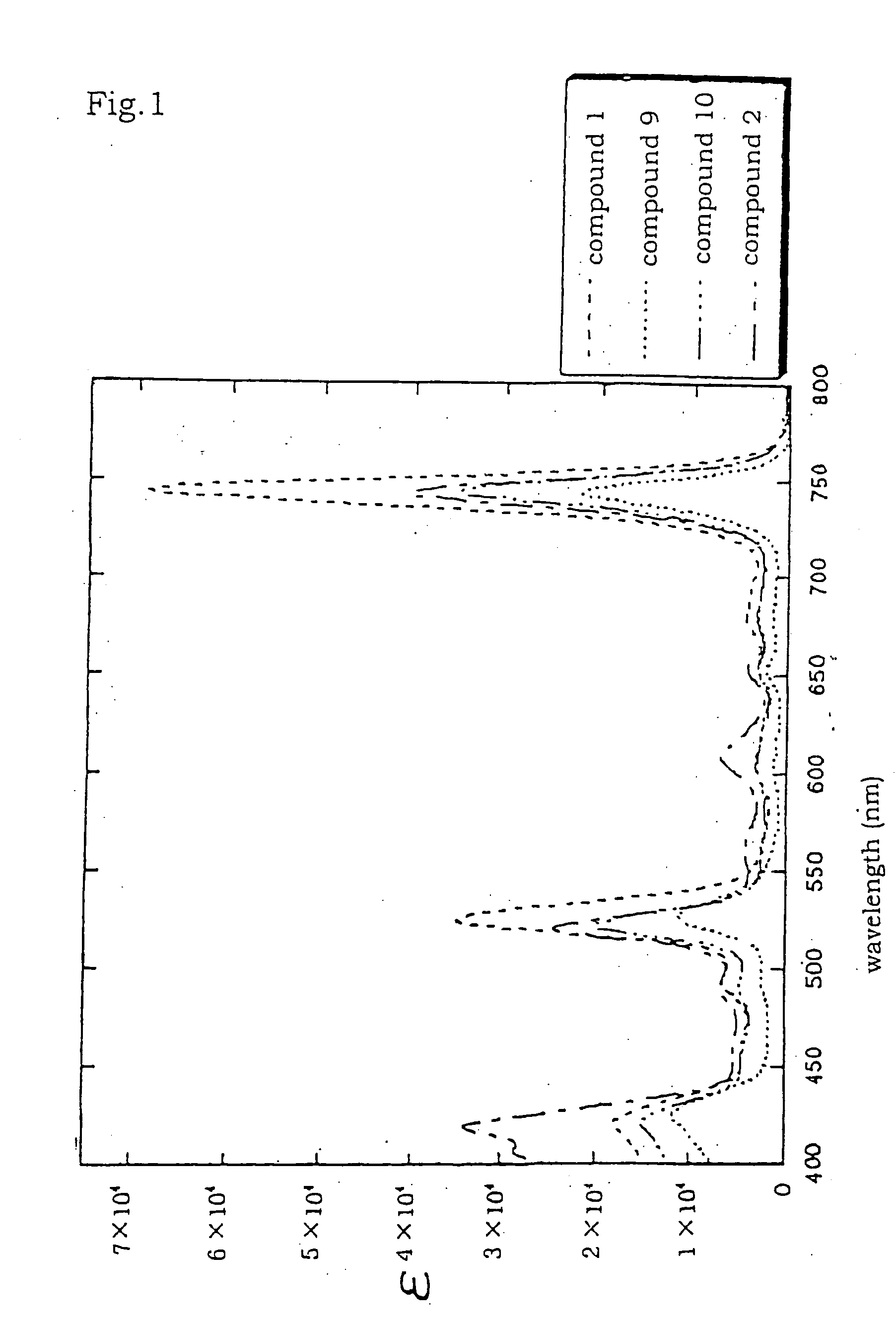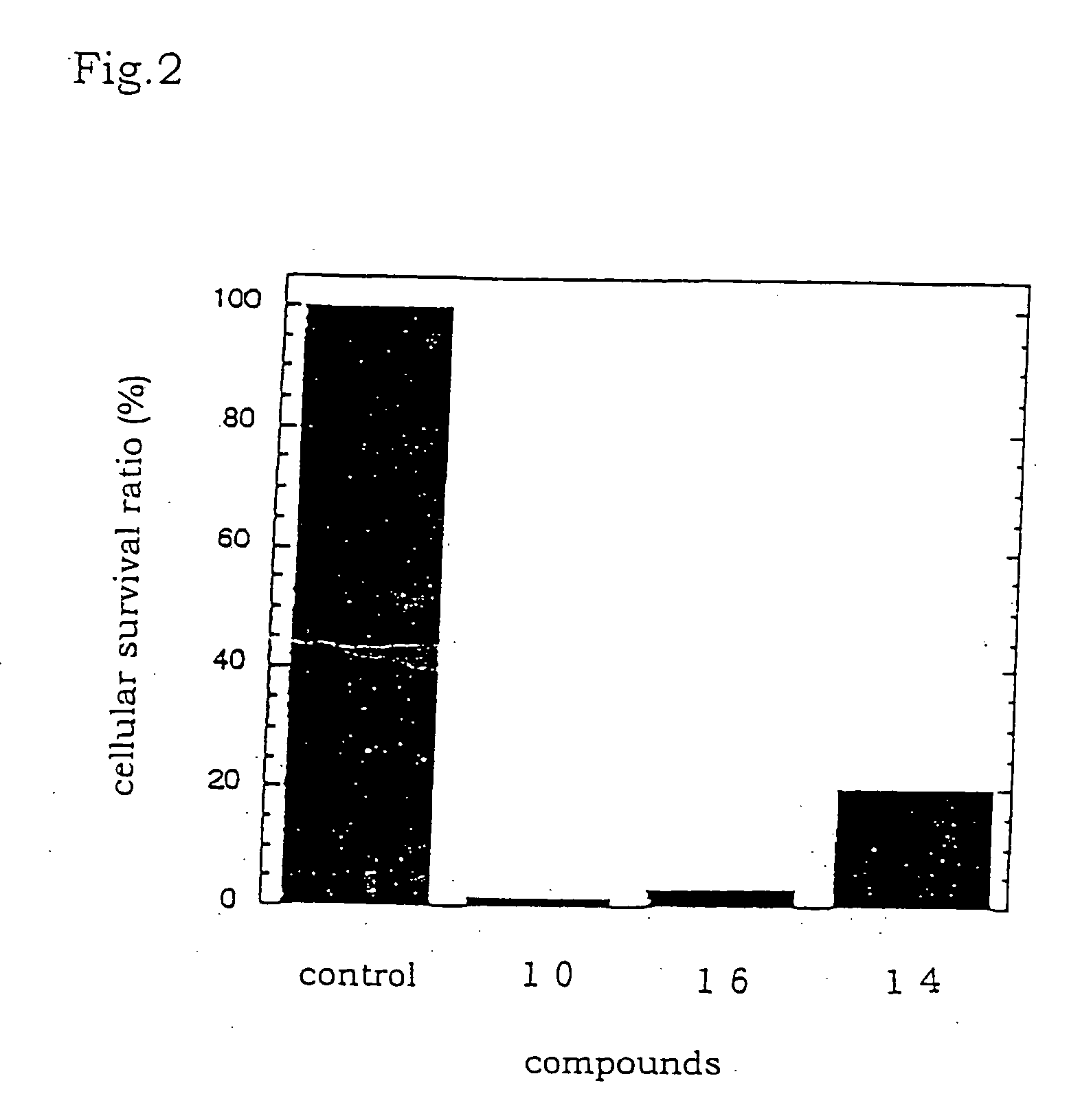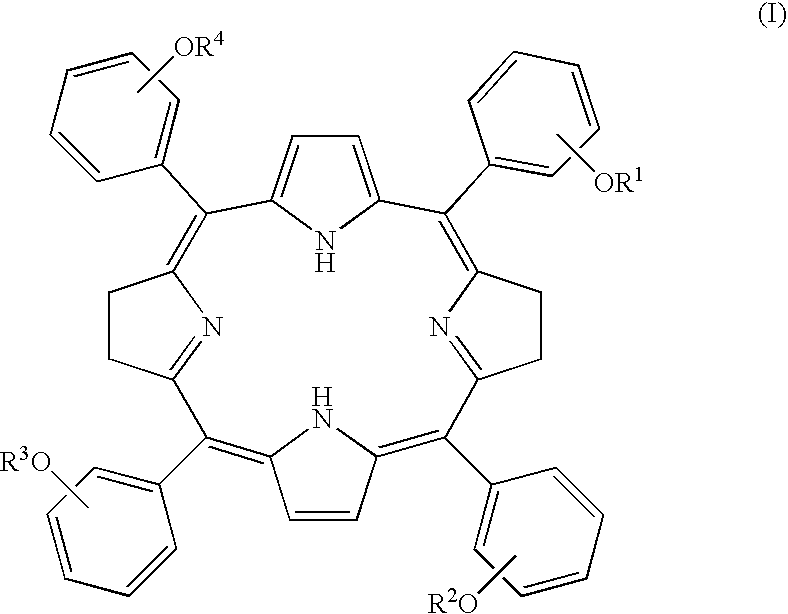Tetraphenylbacteriochlorin derivatives and compositions containing the same
a technology of bacteriochlorin and derivatives, which is applied in the field of tetraphenylbacteriochlorin derivatives, can solve the problems of not actually revealing the synthesis of bacteriochlorin derivatives and their effects as photosensitizers, and achieves the effects of large molar extinction coefficient, high tissue penetration property, and high selectivity for tumor cells
- Summary
- Abstract
- Description
- Claims
- Application Information
AI Technical Summary
Benefits of technology
Problems solved by technology
Method used
Image
Examples
production example 1
2,3,4,6-tetra-O-acetyl-α-D-glucopyranosyl bromide
[0102] D-glucose (39 g, 236 mmol) was dried by a vacuum pump in a 500 mL round bottom flask overnight. Thereafter, 98 mL (71.0 g, 577 mmol) of acetyl bromide were added at a time at room temperature. Immediately after that, a condenser equipped with a calcium chloride tube was mounted and the resulting mixture was stirred vigorously at room temperature for a while. Once reaction had started, gas began to be released from the calcium chloride tube. The mixture was continuously stirred in an ice bath overnight. To the resulting yellow reaction mixture, diethyl ether (390 mL) was added via the condenser, and the resulting reaction mixture was poured in a mixture of ice (310 g) and water (120 mL). The resulting mixture was stirred vigorously. An ether phase was separated and combined with an ether phase extracted from a water phase. The combined ether phase was added to a saturated aqueous cold sodium hydrogen carbonate (390 mL), followe...
production example 2
3-(2′,3′,4′,6′-tetra-O-acetyl-β-D-glucopyranosyloxy)-benzaldehyde
[0104] Quinoline (15 mL) was added to 1.5 g (12 mmol) of m-hydroxybenzaldehyde, to which 2,3,4,6-tetra-O-acetyl-α-D-glucopyranosyl bromide (10.1 g, 25 mmol) was added. Immediately after that, 5.8 g (25 mmol) of silver (I) oxide was added, followed by 15 minutes' stirring at room temperature. The resulting mixture generated heat with progress of reaction. Because the resulting mixture became more and more viscous during the reaction, the mixture was stirred with a glass rod as required. A 25% acetic acid (100 mL) was added to the reaction mixture, which was well stirred on ice bath, followed by filtration. Methanol (150 mL) was added to the filtered-out residue, followed by heating. Then, the resulting mixture was filtered and the obtained filtrate was concentrated until crystals separated. The resulting residue was recrystallized from hot methanol to give the title compound. Light yellow acicular crystals. Yield 3.4 g...
production example 3
5,10,15,20-tetrakis[3-(2′,3′,4′,6′-tetra-O-acetyl-β-D-glucopyranosyl-oxy)phenyl]porphyrin
[0106] 3-(2′,3′,4′,6′-tetra-O-acetyl-β-D-glucopyranosyloxy)benzaldehyde (1.9 g, 3.8 mmol) was dissolved in 680 mL of dry chloroform in an argon-replaced 500 mL round bottom flask equipped with a conderser tube. A reaction vessel was shielded from light with aluminum foil, 0.27 mL (0.27 g, 3.8 mmol) of pyrrole were added through a syringe, and argon gas was introduced with stirring. After about 30 minutes, the introduction of the gas was stopped and BF3.Et2 0 (0.10 mL, 0.80 mmol) was added to the reaction mixture using a syringe, followed by 10 minutes' argon replacement. After an hour, zinc acetate dihydrate (3.9 g, 17.5 mmol) was added to the reaction mixture and argon replacement was carried out for 10 minutes. The resulting mixture was stirred at room temperature for 20 to 24 hours. Subsequently, p-chloranil (0.70 g, 2.7 mmol) was added to the reaction mixture at a time and stirred at 60 to ...
PUM
 Login to View More
Login to View More Abstract
Description
Claims
Application Information
 Login to View More
Login to View More - R&D
- Intellectual Property
- Life Sciences
- Materials
- Tech Scout
- Unparalleled Data Quality
- Higher Quality Content
- 60% Fewer Hallucinations
Browse by: Latest US Patents, China's latest patents, Technical Efficacy Thesaurus, Application Domain, Technology Topic, Popular Technical Reports.
© 2025 PatSnap. All rights reserved.Legal|Privacy policy|Modern Slavery Act Transparency Statement|Sitemap|About US| Contact US: help@patsnap.com



